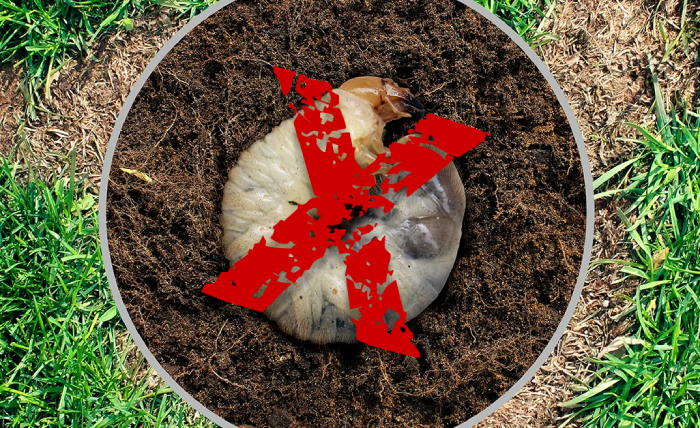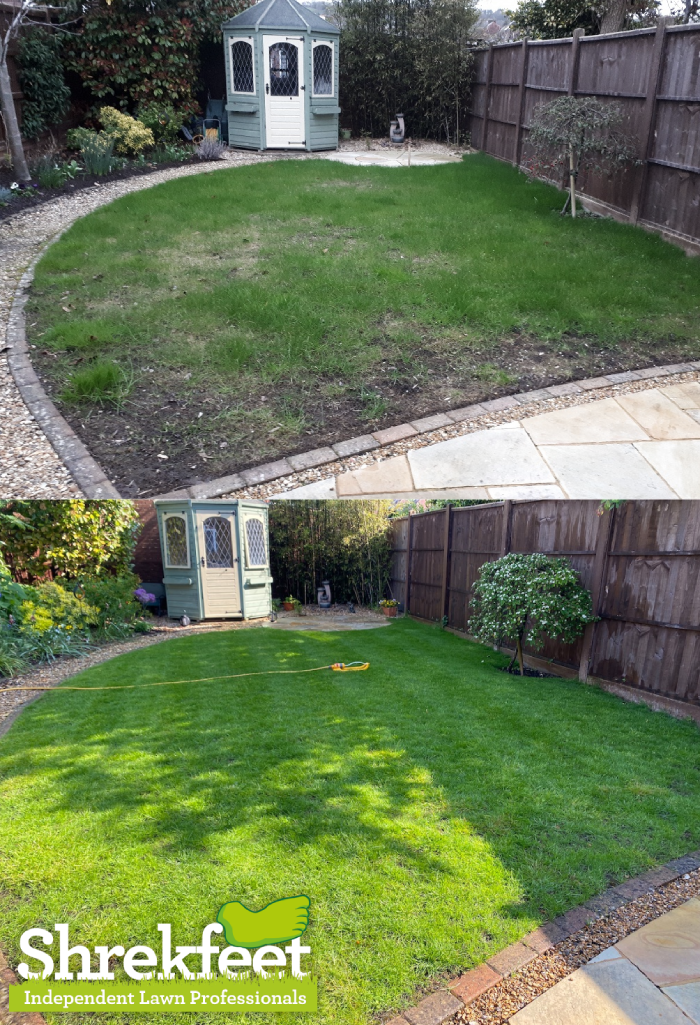Syngenta has developed and successfully licenced a new insecticidal control that is proven to be effective in the control of leather jackets and chafer grubs. We are now able to use this product on lawns to help control these harmful and destructive lawn pests.
 The development of our Grub X treatment
The development of our Grub X treatment
The active ingredient in our Grub X leather jacket and chafer grub control treatment was first found in a South American plant, Ryania seciosa. The scientists took their inspiration from this natural ingredient and began work to develop it further, and ensure it was safe for use. The first commercial launch of the product they developed was in the USA in 2008. In 2013 it was given an EU listing for active use and in 2018 The Chemicals Regulatory Division (CRD) of the Health and Safety Executive began their review. Since then, it has regularly received temporary or emergency approval for use whilst Syngenta has been answering a few final questions with CRD, ahead of the full approval it has now been granted. So, in brief, this is not a new or untested product. It’s been around a significant amount of time and has had plenty of opportunity to prove itself.
How and when should it be used?
Applied as a spray, the product coats organic matter such as the grass leaf or is absorbed into the surface of the soil. This ensures that the active ingredient is readily available to come into contact with the insect as it moves through the soil, or that the plant material the insect eats is coated in the product and will be ingested.
There are a number of critical factors that impact how effective this treatment will be. Firstly, the product needs to reach the target. Leather jackets live in aeration holes in the soil which help to protect them from birds looking for a tasty meal. They emerge from these holes, usually at night, and then begin eating turf thatch and grass. In cool weather they can burrow very deep into warmer soil. In dry weather they burrow to stay in moist soil. Chafer grubs live in the soil and don’t emerge. They consume the roots of plants below the surface. Again, they are proficient at burrowing deeper to avoid cold weather or dry soil. Therefore, soil temperature and moisture are critical to ensure the grubs are close enough to the surface for contact with the treated soil, or actively eating material coated with the product.
Secondly the stage of life of the target grub is critical. This is mostly due to fat reserves. Older grubs have greater fat reserves. This means that they are more likely to be able to wait out the stage of paralysis without starving to death. Younger grubs don’t have these reserves and therefore will starve while paralysed. In technical terms, treatment must be applied during the 1st and 2nd Instar of the grub life cycle. For the product application to be effective, timing is everything.

lawn with leather jacket damage > lawn after our repair services
So how does it work?
The active ingredient enters the target species either through contact or ingestion. This then targets the receptors in the insect, causing an uncontrolled release of calcium from the muscles, disrupting normal muscle contraction. This results in temporary paralysis and as a result the insect is unable to feed. Provided the product is used correctly the target species should die during this period of paralysis.
Treatment timing and lawn damage
One of the issues facing the management of these difficult lawn pests is the fact that damage is more noticeable as the grubs grow and eat more. This means that you are more likely to observe leather jacket damage in the 3rd Instar, later in life, when they will have the fat reserves needed to withstand the temporary paralysis. Catching them early is key. In a lawn that has had damage in the past this is easier as we know the problem exists and can time treatment application appropriately. In a newly affected lawn, the chances are that, once noticed, the grubs are too old to be killed by paralysis. In this instance we may need to adopt a different management approach in the first year and begin preventative Grub X treatments in year 2.
There are a number of different chafer grub species that cause lawn damage. Some species remain in the soil for more than one year. As they mature, they build up greater fat reserves and therefore are not affected in the same way by the insecticidal treatment detailed above. Often, we don’t notice damage from chafers until we are coming out of a period of drought and the plants with compromised root mass do not recover from drought dormancy. That may be at a time of year that is not conducive to effective treatment with an insecticide due to the stage of life of the grub.
If your lawn has been affected with grub issues in the past it is essential to treat the lawn for grubs every year as a preventative measure. Otherwise, by the time you see the damage, the timing of treatment may have passed.
Find out more about our services that control leather jackets and chafer grubs here > Lawn Grub Control Services in Hampshire and Sussex

 Established 2016
Established 2016



